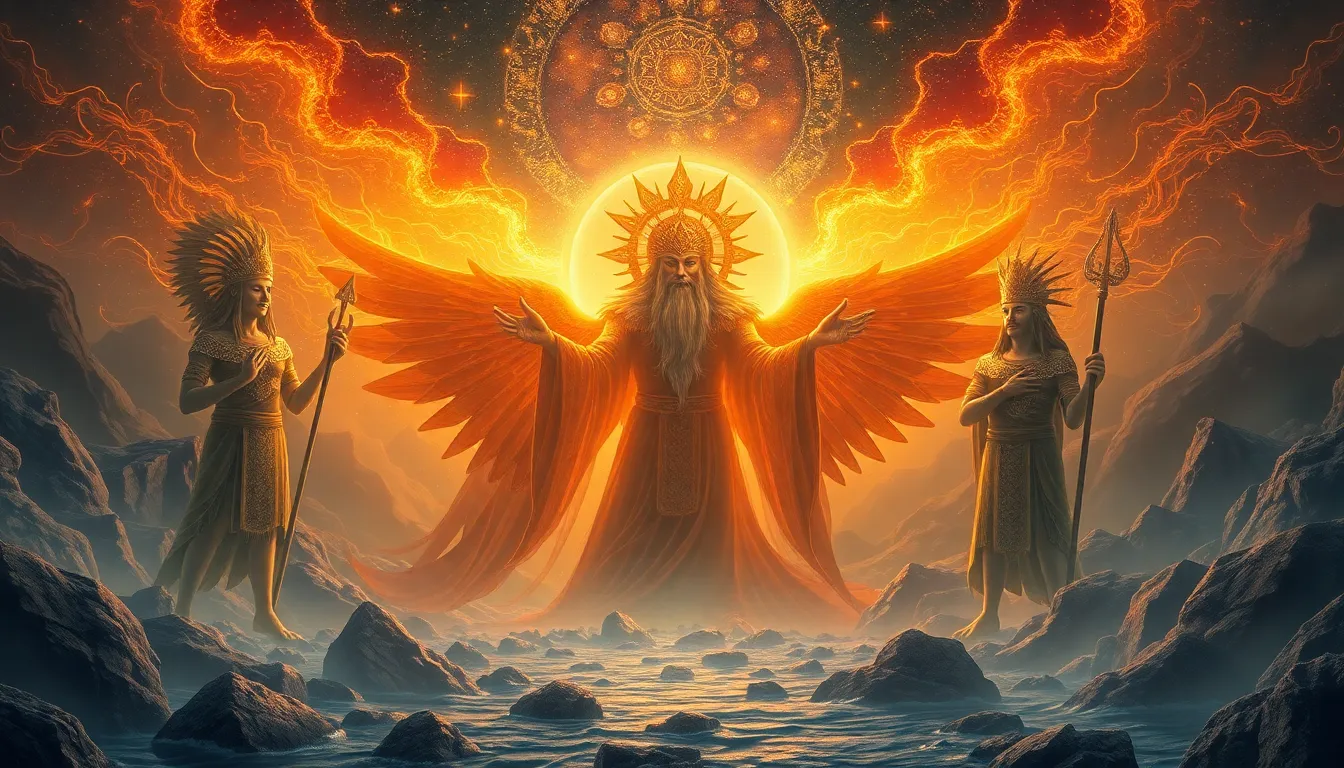End of the World Myths: Are They Just Stories?
I. Introduction
End-of-the-world myths, often referred to as apocalyptic narratives, are stories and beliefs that predict a catastrophic end to human civilization or the world as we know it. These myths have been prevalent throughout history, appearing in various cultures and religions, often serving as a reflection of societal anxieties and existential fears.
This article aims to explore the origins, interpretations, and implications of these myths, delving into their historical context, psychological underpinnings, and cultural significance. By understanding these narratives, we can gain insight into the human condition and our collective psyche.
II. Historical Context of End-of-the-World Myths
End-of-the-world myths have deep historical roots, with early civilizations crafting their own narratives about apocalyptic events.
A. Early civilizations and their apocalyptic narratives
- Mesopotamian myths: Ancient Mesopotamians believed in cyclical destruction and rebirth, often depicted through tales of gods battling chaos.
- Mayan calendar prophecies: The Mayans had a complex calendar system, and the end of the 13th baktun in 2012 sparked significant speculation about an impending apocalypse.
B. End-of-the-world beliefs in major religions
- Christianity: The Book of Revelation describes the end times with vivid imagery, including the final battle between good and evil.
- Hinduism: The concept of Kali Yuga represents a cycle of time characterized by moral decline, leading to eventual renewal.
C. Cultural variations in apocalyptic thinking
Different cultures have unique interpretations of the apocalypse, shaped by their historical and social contexts, leading to a rich tapestry of apocalyptic narratives around the world.
III. Psychological Factors Behind Apocalyptic Beliefs
The belief in apocalyptic scenarios is closely tied to human psychology and societal conditions.
A. Human psychology and fear of the unknown
Fear of the unknown is a fundamental aspect of the human experience, often leading to speculative narratives about the future and the end of existence.
B. The role of cognitive biases in interpreting signs of the end times
Cognitive biases, such as confirmation bias, can lead individuals to interpret ambiguous events or data as signs of an impending apocalypse, reinforcing their fears.
C. Societal anxieties and how they shape apocalyptic narratives
Societal anxieties—whether they stem from political instability, climate change, or pandemics—often manifest in apocalyptic thinking, reflecting our collective fears and uncertainties.
IV. Modern Interpretations of End-of-the-World Myths
In the modern era, the interpretation of end-of-the-world myths has evolved significantly, influenced by various factors.
A. Influence of technology and science on contemporary myths
Technological advancements have led to new interpretations of apocalyptic scenarios, with some believing that artificial intelligence or nuclear war could lead to humanity’s demise.
B. The impact of climate change and environmental crises
As climate change becomes increasingly evident, many view it as a potential catalyst for apocalyptic events, leading to widespread fear and concern.
C. Media portrayal of apocalyptic scenarios in film and literature
Films and literature often explore apocalyptic themes, shaping public perception and fear regarding potential end-of-the-world scenarios.
V. Case Studies of Prominent End-of-the-World Predictions
Throughout history, several prominent predictions have captured public imagination and led to widespread concern.
A. Y2K and the millennium bug
The year 2000 brought fears of a technological collapse, as many believed that computer systems would fail due to the millennium bug. While some disruptions occurred, the apocalypse was largely avoided.
B. The Mayan calendar prediction of 2012
The end of the Mayan calendar in December 2012 led to widespread speculation about an impending apocalypse, but the date passed without significant incident.
C. Recent predictions related to climate change and pandemics
In recent years, predictions related to climate change and pandemics have sparked fears of global catastrophe, highlighting the ongoing relevance of apocalyptic thinking in contemporary society.
VI. The Role of Religion in Shaping Apocalyptic Views
Religion plays a significant role in shaping apocalyptic beliefs, influencing how communities interpret signs of the end times.
A. Fundamentalist beliefs and their influence on end-time narratives
Fundamentalist religious groups often emphasize apocalyptic narratives, viewing contemporary events as signs of the approaching end times.
B. Interfaith perspectives on apocalypse and salvation
Different religions offer varied perspectives on the apocalypse and salvation, fostering dialogue and understanding between faiths.
C. The rise of new religious movements centered around apocalypse
New religious movements often emerge around apocalyptic beliefs, providing followers with a sense of purpose and community in uncertain times.
VII. Debunking Common End-of-the-World Myths
It is essential to critically analyze and debunk common end-of-the-world myths to foster a more rational understanding of these beliefs.
A. Scientific explanations for apocalyptic events
Many apocalyptic events can be explained through scientific principles, debunking supernatural interpretations.
B. Critical analysis of failed predictions
Examining the history of failed predictions reveals patterns of human behavior and the importance of skepticism in the face of apocalyptic claims.
C. The importance of skepticism and critical thinking
Encouraging critical thinking and skepticism can help individuals navigate apocalyptic narratives and focus on evidence-based perspectives.
VIII. The Cultural Significance of End-of-the-World Myths
End-of-the-world myths are not merely stories; they hold cultural significance that reflects societal values and fears.
A. How these myths reflect societal values and fears
Apocalyptic narratives often reflect the values and anxieties of the societies that create them, revealing what people hold dear and what they fear losing.
B. The impact of apocalyptic narratives on art, literature, and popular culture
Apocalyptic themes have profoundly influenced art, literature, and popular culture, inspiring countless works that explore the human condition.
C. Lessons learned from historical apocalyptic beliefs
Studying historical apocalyptic beliefs can provide valuable lessons about resilience, hope, and the potential for renewal even in the face of catastrophe.
IX. The Future of End-of-the-World Myths
As we look to the future, current global issues are likely to shape new end-of-the-world myths.
A. How current global issues may shape future narratives
Challenges such as climate change, political instability, and technological advancements will continue to influence how societies interpret and respond to apocalyptic scenarios.
In conclusion, end-of-the-world myths are more than just stories; they are reflections of our deepest fears, hopes, and values as a society. Understanding these myths can help us navigate our own anxieties and foster a more resilient future.



